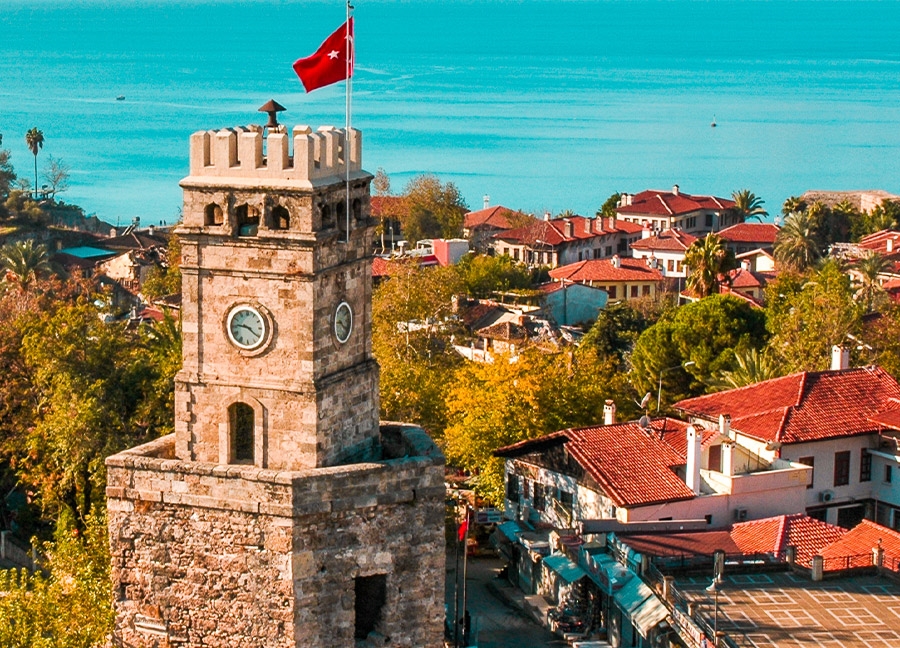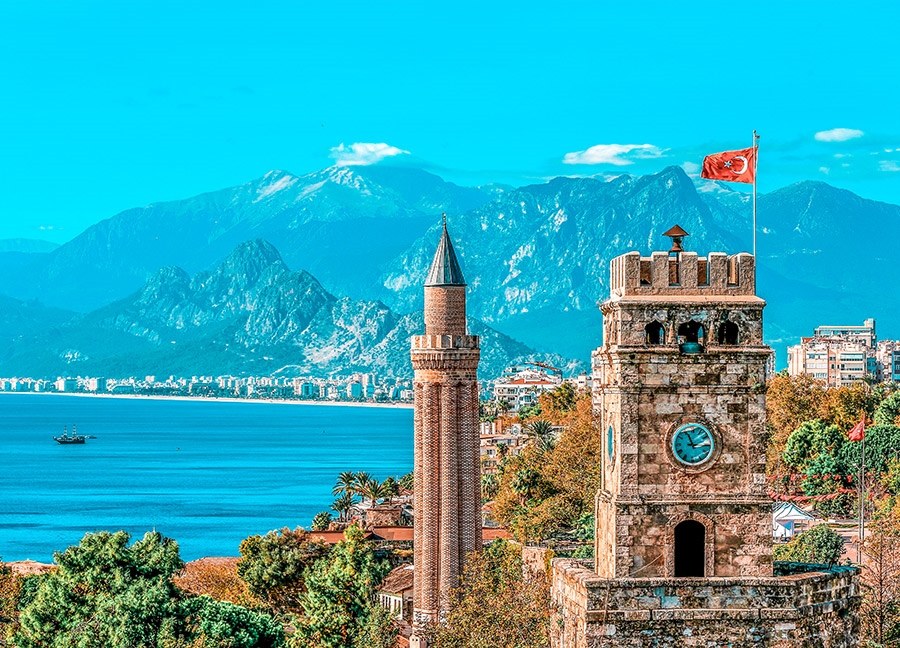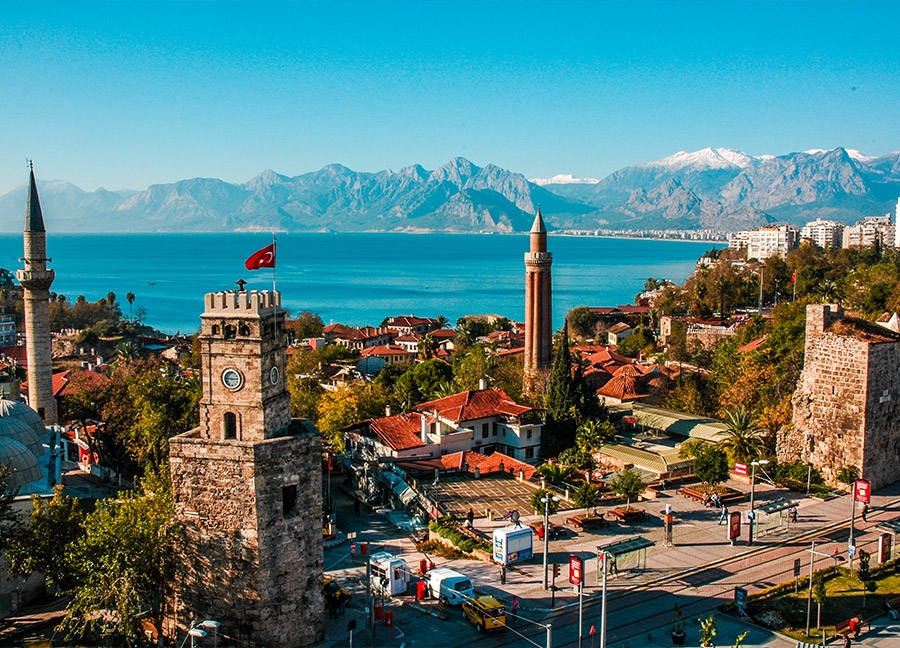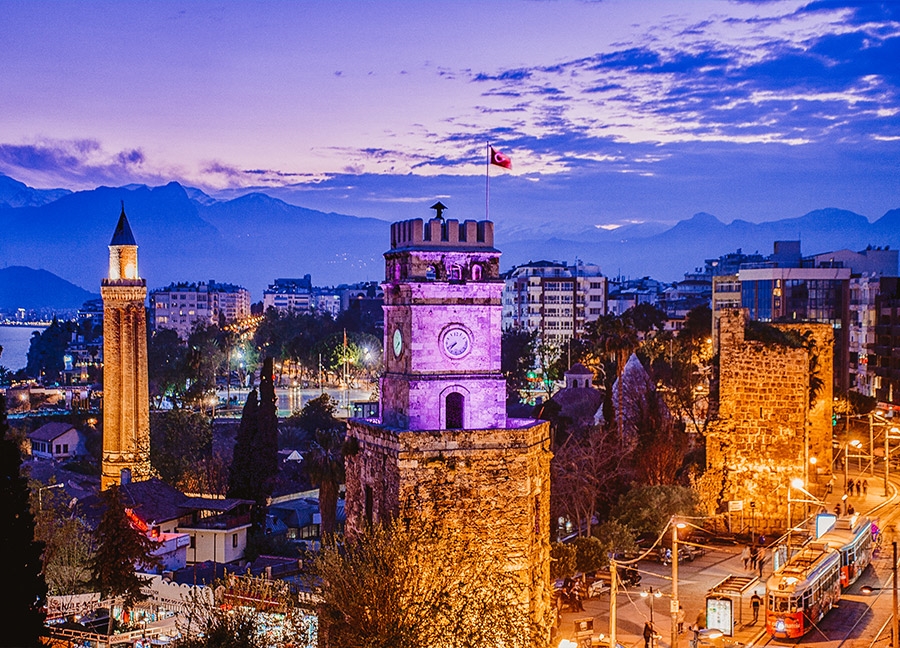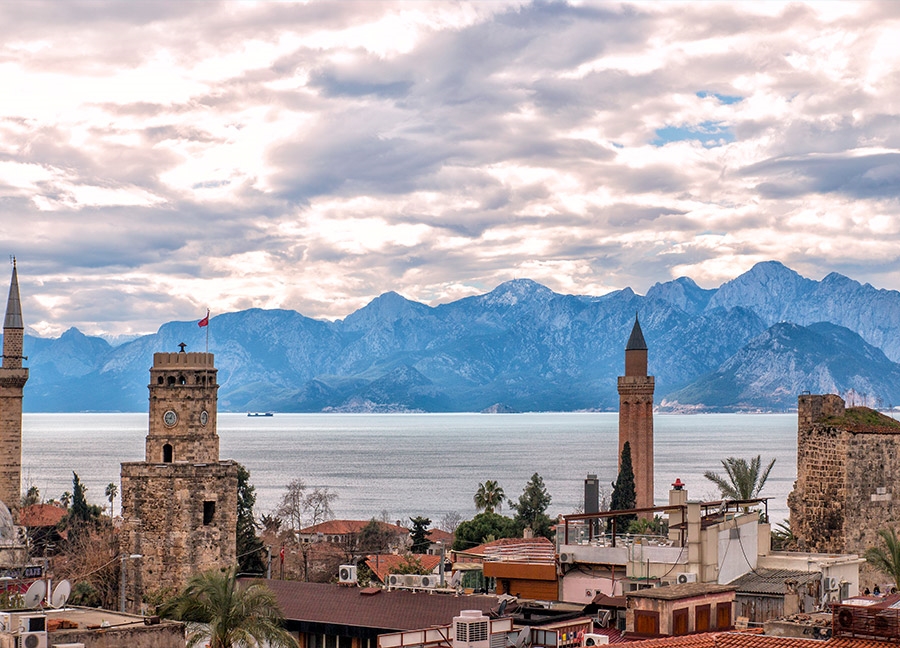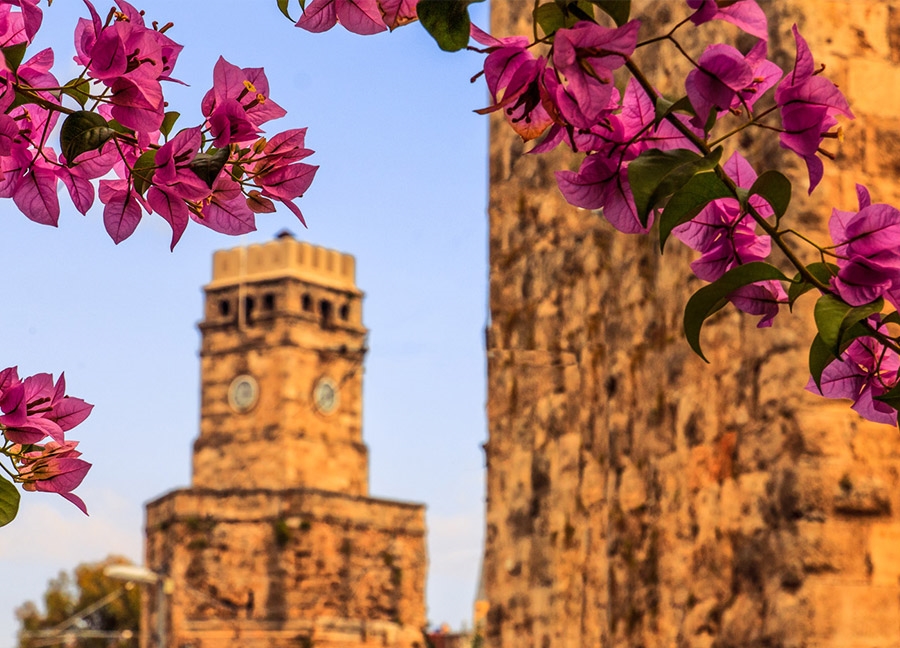The Clock Tower is among the symbolic structures of Antalya. It is on Cumhuriyet Street, in Kalekapısı Mevkii, which was called 'Kapuağzı' in ancient times. Being one of the main entrance routes of Kaleiçi, the tower has the distinction of being one of the most preferred meeting points of Antalya residents to its central location.
The tower was built on the north-facing side of the destroyed outer walls surrounding Kaleiçi. It was first built in a square plan on a pentagonal bastion in the 9th century during the Byzantine Period and was turned into a clock tower during the Ottoman Empire Period. Although it is not known exactly by whom and when it was built. It is widely believed that the tower was built in 1901, when the Grand Vizier Küçük Sait Pasha ascended to the throne on the 25th of Abdulhamid II, as clock tower constructions were popularized in Anatolia during the reign of Sultan Abdulhamid II. According to the information found in the news of the Antalya Anadolu Newspaper, it is stated that the construction of the Clock Tower was completed in 1921, when the national struggle continued.
The Clock Tower was covered with a dome until 1942. It was damaged in the storm that year, and in 1945 an upper part resembling bastions was added. It has four clocks on its four sides and a bell on the top. The tower is 14 meters high from the ground to the top, and 8 meters above the bastion, and a cornice decorated with fine leaf reliefs adorns the perimeter of the tower's bastion. The upper part of the cornice is made of rough-hewn stone. A later section with slightly protruding cut stone forms the base of the Clock Tower. The clock and dials of the tower used to be established every week and beat once every hour. An electronic clock was replaced in 1974 by Antalya's famous watchmaker, Ali Rıza Suduran.
As one of the historical buildings that make up the city's silhouette, the Clock Tower, which adds a different aesthetic to the appearance of Antalya, continues to defy the years with all its splendor and elegance.


